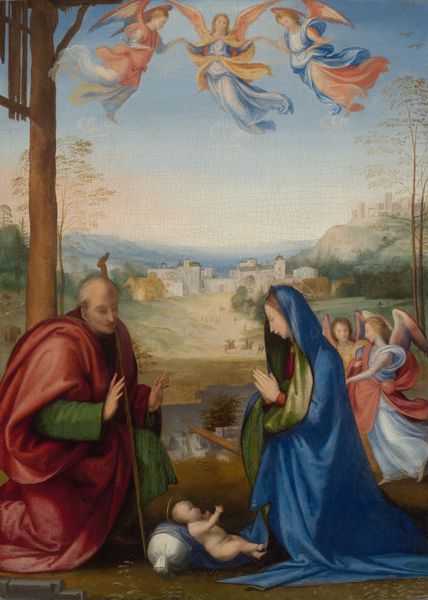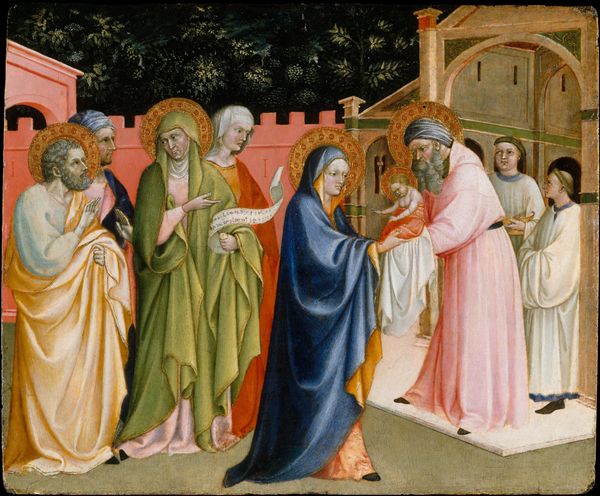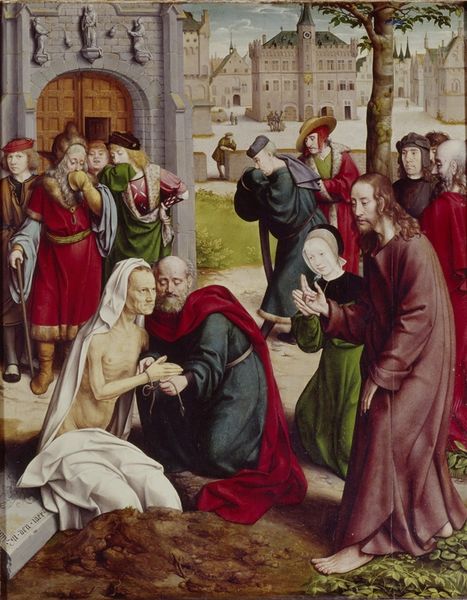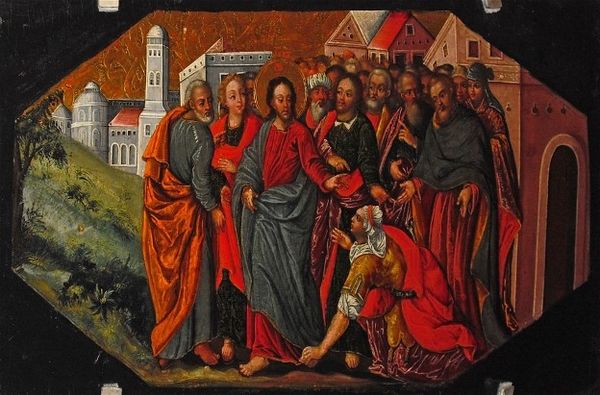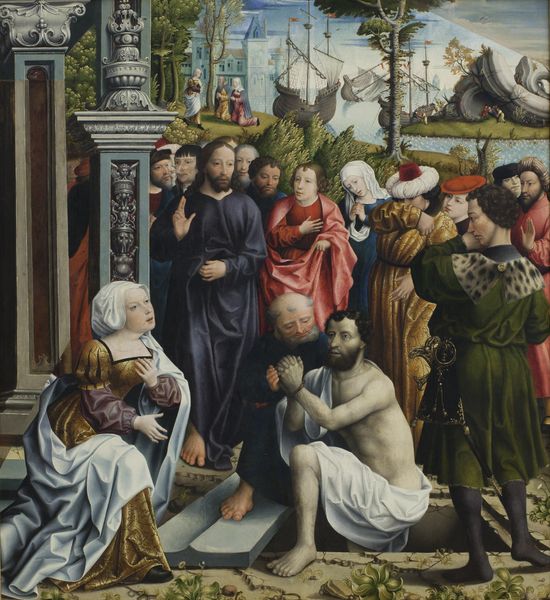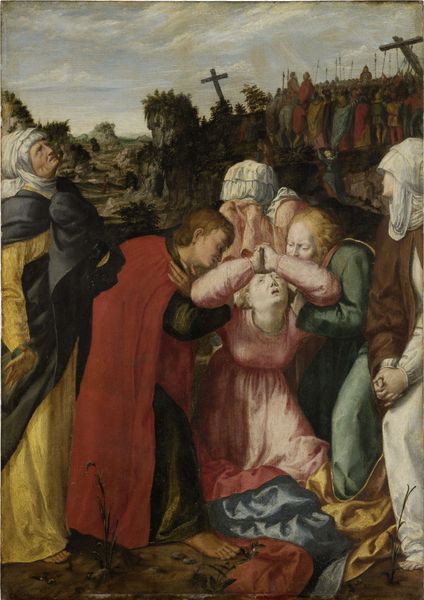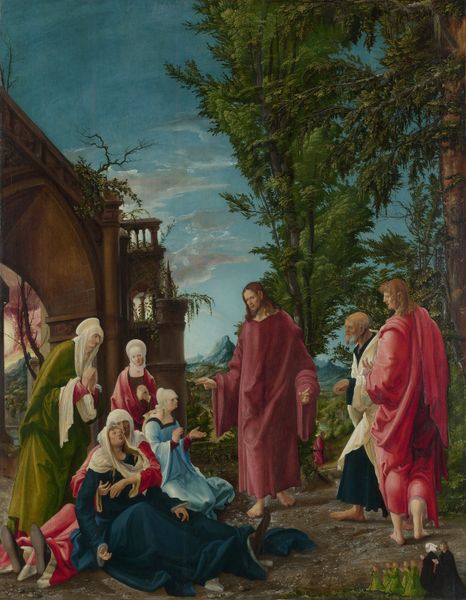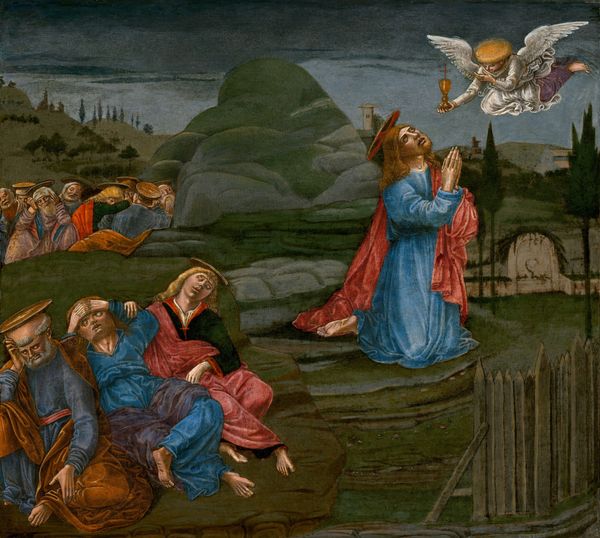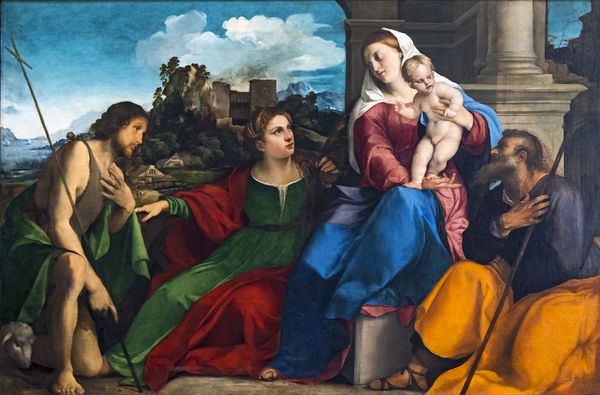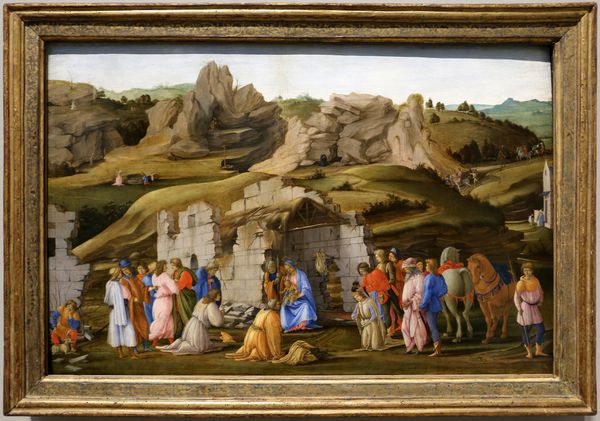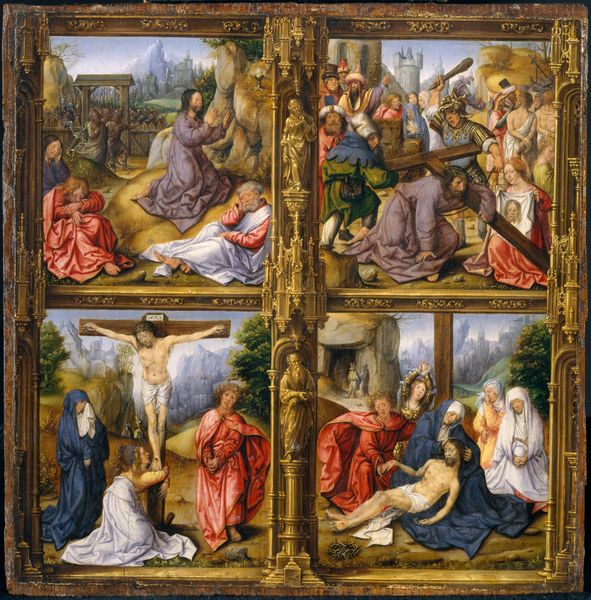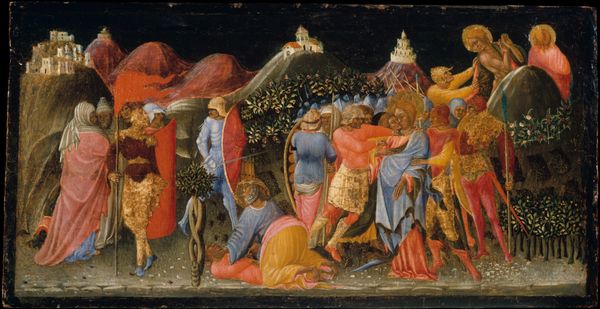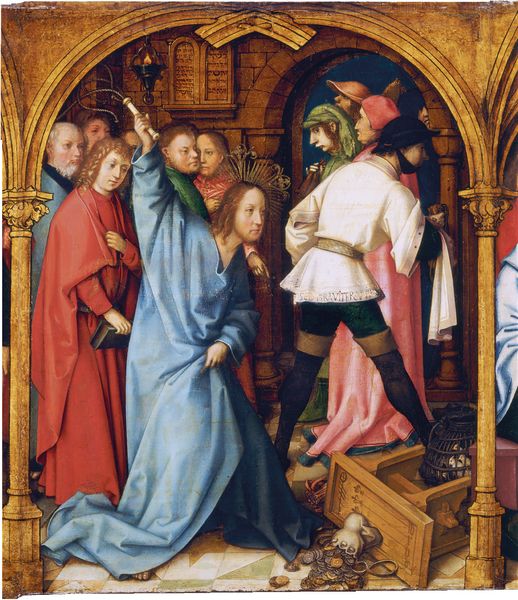
The Meeting of Joachim and Anne outside the Golden Gate of Jerusalem 1497
0:00
0:00
painting, oil-paint, wood
#
high-renaissance
#
painting
#
oil-paint
#
figuration
#
oil painting
#
wood
#
watercolour illustration
#
history-painting
#
italian-renaissance
#
realism
Dimensions: 112.5 cm (height) x 124 cm (width) (Netto)
Curator: Welcome. Here we have Filippino Lippi’s 1497 oil-on-wood painting, "The Meeting of Joachim and Anne outside the Golden Gate of Jerusalem." Editor: It's beautiful. It evokes a sense of profound serenity despite what I assume is a historical subject laden with potential drama. The colours are surprisingly vibrant. Curator: Indeed, Lippi captures a pivotal moment from the apocryphal Gospel of James – the reunion of Joachim and Anne. Barren until their later years, their embrace symbolizes hope and the imminent conception of Mary. The subject matter would have resonated deeply within the prevailing patriarchal framework of Florentine society during the Quattrocento period in that only women could produce future family heirs, thereby granting men status within their respective lineages. Editor: Right, and notice how Lippi has rendered this meeting not as a spectacle but an intimate and rather ordinary affair. The gazes of the women surrounding Anne seem filled with empathy rather than reverence or awe. To your point about lineage, this composition, in the absence of strong emotion, shifts its focus from mere reproduction onto what might otherwise be considered everyday relationships in Renaissance Italy. Curator: And one can’t ignore the setting, carefully situated just outside Jerusalem, marking a transition from worldly life, depicted to the left with architectural motifs, to spiritual life in the right, implied by a passing shepherd leading his flock into verdant and rolling hills. Editor: Yes, it almost suggests a journey beyond constraints imposed by societal structures towards a world of potential change. And consider how Lippi subverts this trope by presenting these biblical figures not as divinely chosen subjects but rather subjects embedded within very real, ordinary lives of men and women seeking self-determination. Curator: That's an astute reading. Lippi, in portraying Joachim and Anne's meeting, uses a realistic style, embedding the painting's overall theme with very human characteristics, challenging the perception of divine events as entirely removed from the common human experience. Editor: The painting prompts me to reflect on how individuals are often at odds between external expectations, such as familial duties in 15th century Italy, and internal aspirations of pursuing other types of life-affirming opportunities beyond just family inheritance. Curator: By intertwining elements of social realism and spiritual narrative, this work not only reflects its time but offers enduring commentary on individual journeys of the interior self, framed within historical imperatives. Editor: It seems to encourage ongoing reflections on themes of freedom and expectation and on individual identity within wider community narratives.
Comments
statensmuseumforkunst almost 2 years ago
⋮
Filippino Lippi first studied under his father, Filippo Lippi (1406-1469), and subsequently under Sandro Botticelli (1445-1510), whose influence is evident in the elegant figures and the linear style. The painting, which belongs to Lippi’s mature period, depicts a scene from Jacopo da Voragine’s (c. 1230-1298) Legenda Aurea (The Golden Legend). The motif We are brought into the story by a young handmaiden whose gaze meets ours directly. Mary’s parents are seen in a tender embrace, finally reunited after a long period of separation. The legend recounts how Mary was miraculously conceived at the moment of the couple’s embrace. Lippi's interest in classical Antiquity Being a true Renaissance artist, Lippi was as interested in classical Antiquity as Andrea Mantegna (1430/31-1506). In this painting, his interest is evident in e.g. the Corinthian columns and reliefs of e.g. the Golden Gate. The rest of the architecture in the background Lippi painted in a more medieval style referring to his home town of Florence, often referred to as a new Jerusalem at the time. Lippi’s Florentine roots are also demonstrated in the signature written in gold on the sill of the Golden Gate: "PHILIPPINUS DE FLORENTIA".
Join the conversation
Join millions of artists and users on Artera today and experience the ultimate creative platform.

